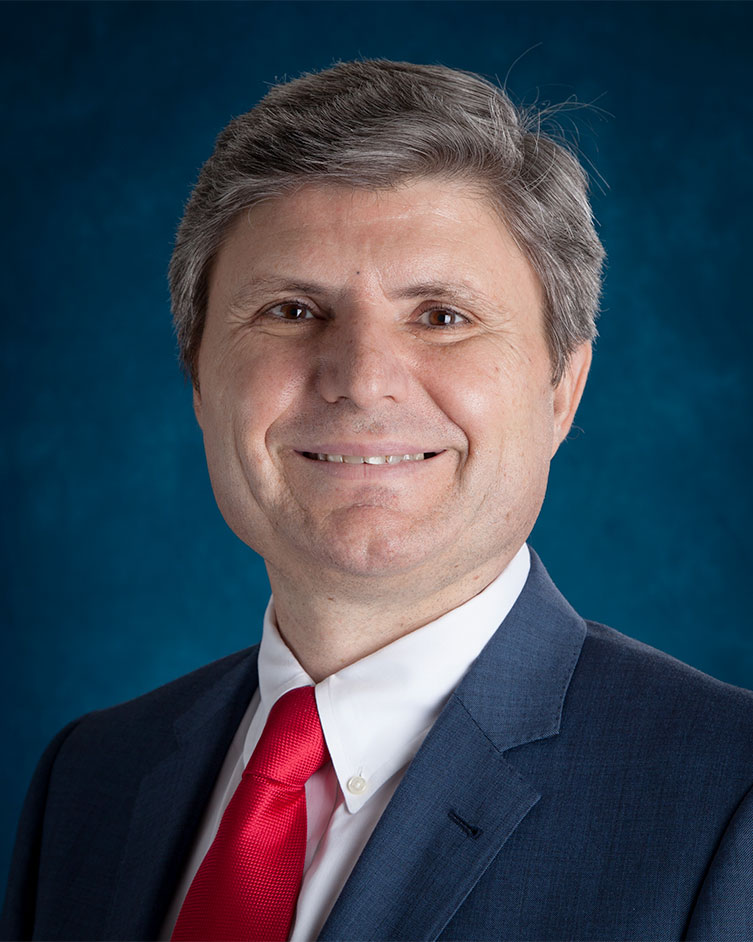Kakadiaris Part of NSF-Funded Multi-University Collaborative Team
The skyrocketing demand for COVID-19 treatment has scientists working overtime to produce medicines and vaccines. But simply creating these therapies isn’t the only hurdle facing researchers and world leaders.
Once a vaccine is developed, for example, it will inevitably be in short supply. And if rich countries continue to monopolize doses, poorer countries will be left to fend for themselves.

Situations like this fuel the counterfeit drug market, says Nikos Passas, professor of criminology and criminal justice at Northeastern University. When people are desperate, they’ll take whatever treatments they can get. And that can be incredibly dangerous to people’s health.
Passas and two other Northeastern professors, Mansoor Amiji and Ravi Sundaram, are teaming up with researchers, Ioannis Kakadiaris from University of Houston and Muhammad Zaman from Boston University, to develop techniques to disrupt the global trade of counterfeit medicines and medical equipment.
The researchers, who recently received a grant from the National Science Foundation, will use the funding to build a diverse team to tackle challenges in the counterfeit medical market during the pandemic and beyond.
“Fighting this requires a multidisciplinary approach from law enforcement to chemists to computer scientists,” says Muhammad Zaman, a biomedical engineering professor at Boston University and member of the team. Zaman’s work focuses on using technology to understand and address the counterfeit medical supplies trade.
As much as 10 percent of the world’s medicine is counterfeit, Passas says. Counterfeit drugs also account for $75 billion in losses out of a $962 billion medical supplies market and cause half a million deaths annually.
In this context, the researchers define counterfeit products as goods that falsely claim to contain ingredients or materials that treat or protect people from certain illnesses.
Since the beginning of the pandemic, for example, distribution of fake N95 masks has been a huge problem for medical professionals—the counterfeits have lower quality filtration mechanisms that don’t meet medical standards, leaving users with a false sense of security.
At their most benign, some counterfeit products are ineffective placebos. But at their worst, some counterfeits contain toxic chemicals that actively harm the user, explains Amiji, University Distinguished Professor in the departments of pharmaceutical sciences and chemical engineering.
Another long-term consequence of counterfeit drugs is the emergence of drug resistance, an existing problem that stands to be exacerbated by the use of substandard medications.
Take antibiotics, for example. “If you’re supposed to take a pill that has 250 milligrams of the drug, but the counterfeit really only has 50 milligrams, then the pathogen is only exposed to a fraction of the dose,” says Amiji. The medication won’t kill the bacteria, giving it an opportunity to develop and become resistant to the drug.
The term “counterfeit” can be interpreted a few different ways, since some knock-off products do achieve the same outcome as the original drug or equipment. But for the purposes of their research, the team will not be monitoring these types of drugs and supplies.
Instead, their main priorities are falsified goods—products that are passed off as the original without achieving any of the desired effects—as well as substandard products, stolen or smuggled goods, and price-gouged items, Passas says.
Substandard products are made by legitimate companies but lack quality control and oversight. Stolen goods are illegally obtained products that are resold into a market, while smuggled goods, whether real or counterfeit, refer to products that are introduced to a new market illicitly. Price-gouged items are those sold for extortionate prices due to high demand.
The first step in taking down the counterfeit medical supply apparatus is to follow the money, says Sundaram, team member and professor in the Khoury College of Computer Sciences. “That’s my job, to collect data on the illicit flows of money and goods and analyze where these networks can be disrupted,” he says.
The flow of money is often easier to spot than the flow of products, so the researchers will work backwards. “Usually, if there are counterfeit goods going in one direction, there will be money flowing in the opposite direction,” Sundaram says.
Ioannis Kakadiaris, a Hugh Roy and Lillie Granz Cullen Distinguished University Professor
of computer science at the University of Houston, stresses that it’s also important
for the research to yield explainable and actionable information, which may one day
be used by law enforcement.
“No matter what we do, if we cannot explain to law enforcement why we suspect there’s
a catastrophic failure that requires an intervention, then we haven’t accomplished
anything,” Kakadiaris says. “The five of us can’t enforce the law. Our job is to provide
the law enforcement community with credible leads.”
Passas hopes that actors on all sides of this problem can rally together toward common goals, such as lower financial cost, rule of law, integrity, and economic development. For pharmaceutical companies, the incentive is to protect their trademarked products and their reputations as trustworthy brands. For consumers, the objective is to protect people’s health. For public authorities, it is public health and security.
“It’s really a win-win,” Passas says.
“A COVID-19 vaccine is likely to create a demand/supply problem,” he adds. “The question we’re trying to answer is: How do we bring all the stakeholders together to prioritize vulnerable populations at a price that’s affordable?”
- Emily Arntsen, Northeastern University